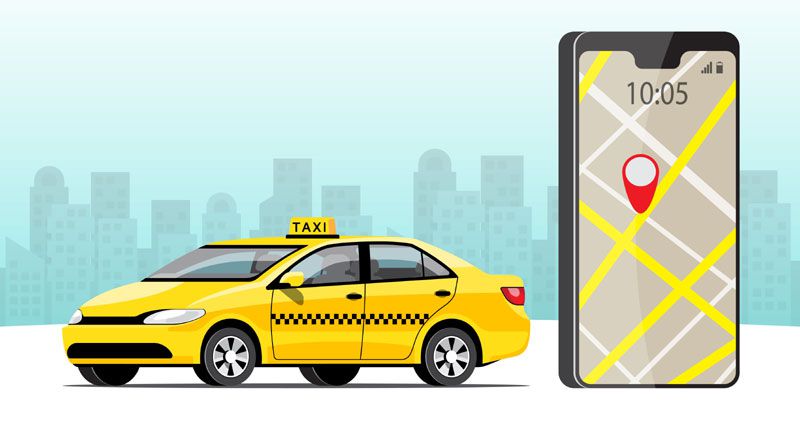Introduction:
In recent years, the taxi sector has experienced a dramatic upheaval with the introduction of mobile technology. Taxi apps have completely transformed the way people commute, providing convenience, reliability, and affordability. At the core of these advances lies Artificial Intelligence (AI), which plays an essential role in improving user experience, streamlining processes, and guaranteeing security. In this extensive guide, we delve into the various facets of AI in taxi app development, exploring its applications, advantages, and future possibilities.
1. AI-Powered Dispatch Systems:
-
Traditional taxi dispatch systems relied on manual processes, often leading to inefficiencies and delays. AI-powered dispatch systems, on the other hand, leverage machine learning algorithms to optimize the allocation of drivers based on real-time demand and traffic conditions.
-
By analyzing historical data and current variables such as weather, events, and traffic patterns, AI can predict demand fluctuations and dynamically adjust driver assignments, minimizing passenger wait times and maximizing fleet utilization.
-
Advanced algorithms also consider factors like driver preferences, vehicle capacity, and proximity to passengers to ensure optimal matching, resulting in a smoother and more efficient experience for both drivers and passengers.
2. Predictive Analytics for Demand Forecasting:
-
One of the key challenges in the taxi industry is predicting demand accurately. AI-powered predictive analytics enable taxi companies to anticipate future demand patterns with greater precision, allowing them to deploy resources more effectively.
-
By analyzing vast amounts of data from various sources, including historical ride data, demographic trends, and external events, AI algorithms can identify patterns and correlations to forecast demand at different times and locations.
-
This proactive approach enables taxi companies to adjust pricing, allocate resources, and optimize driver schedules in advance, improving overall operational efficiency and revenue generation.
3. Dynamic Pricing and Surge Management:
-
Dynamic pricing, also known as surge pricing, is a strategy used by taxi apps to balance supply and demand during periods of high demand. AI algorithms play a crucial role in determining optimal pricing strategies based on real-time market conditions.
-
By analyzing factors such as rider demand, driver availability, and competitor pricing, AI can dynamically adjust fares to incentivize drivers to meet increased demand while ensuring affordability for passengers.
-
Furthermore, AI-powered surge management systems can predict demand surges in advance and proactively notify drivers, enabling them to position themselves strategically to capitalize on higher fares.
4. Route Optimization and Navigation:
-
Efficient route planning is essential for minimizing travel time, fuel consumption, and environmental impact. AI-powered navigation systems leverage real-time traffic data, historical route information, and machine-learning algorithms to optimize driving routes.
-
These systems analyze factors such as traffic congestion, road closures, and accidents to identify the fastest and most fuel-efficient routes for drivers. By considering dynamic variables and adapting to changing conditions, AI navigation systems help drivers reach their destinations faster and more safely.
-
Additionally, AI algorithms can learn from driver behavior and feedback to personalize route recommendations and provide real-time guidance, enhancing the overall driving experience and reducing the likelihood of errors or missed turns.
5. Safety and Security Enhancements:
-
Ensuring passenger safety and security is paramount in the taxi industry. AI technologies offer various features and capabilities to enhance safety measures and mitigate risks.
-
AI-powered driver monitoring systems use computer vision and biometric recognition techniques to detect signs of fatigue, distraction, or impairment in drivers. Real-time alerts can be generated to intervene and prevent potential accidents.
-
Natural Language Processing (NLP) algorithms enable virtual assistants within taxi apps to interact with passengers and address their inquiries or concerns. These AI-driven chatbots can provide real-time assistance, facilitate communication between drivers and passengers, and handle emergencies efficiently.
-
Furthermore, AI-based fraud detection algorithms can analyze transaction data and user behavior to identify suspicious activities such as payment fraud or identity theft, enhancing overall security and trust in the platform.
6. Personalization and Customer Experience:
-
AI technologies enable taxi apps to deliver personalized experiences tailored to individual preferences and behavior. By analyzing user data and feedback, AI algorithms can anticipate user needs and provide relevant recommendations and services.
-
Personalized recommendations for preferred pickup locations, favorite routes, and preferred payment methods enhance user convenience and satisfaction. AI-driven recommendation engines can also suggest nearby attractions, restaurants, or events based on user preferences and location.
-
Additionally, AI-powered voice assistants and chatbots offer intuitive interfaces for interacting with the app, allowing users to book rides, check fare estimates, and provide feedback using natural language commands.
7. Future Prospects and Challenges:
-
The role of AI in taxi app development is poised to expand further in the coming years, driven by advancements in machine learning, data analytics, and automation technologies.
-
Emerging technologies such as autonomous vehicles and drone taxis present new opportunities for AI integration, promising to revolutionize the transportation industry and reshape urban mobility.
-
However, the widespread adoption of AI in taxi app development also raises concerns regarding data privacy, algorithmic bias, and job displacement. Addressing these challenges will require proactive measures to ensure transparency, fairness, and accountability in AI-driven systems.
Conclusion:
Artificial Intelligence is reshaping the taxi industry, spurring innovation, and enhancing the overall customer experience. From AI-powered dispatch systems and predictive analytics to dynamic pricing and customized customer experiences, the role of AI in taxi app development is multifaceted and transformative. As technology advances, AI will play an increasingly prominent role in shaping the future of transportation, opening the door for safer, more effective, and sustainable mobility solutions.




